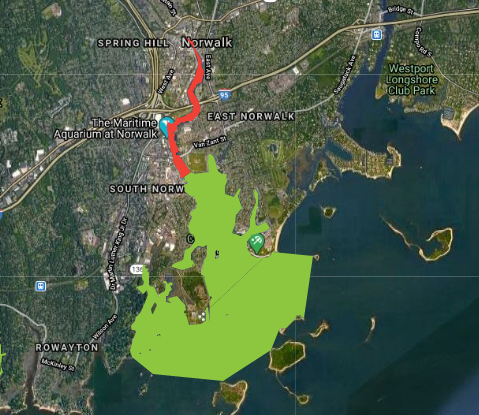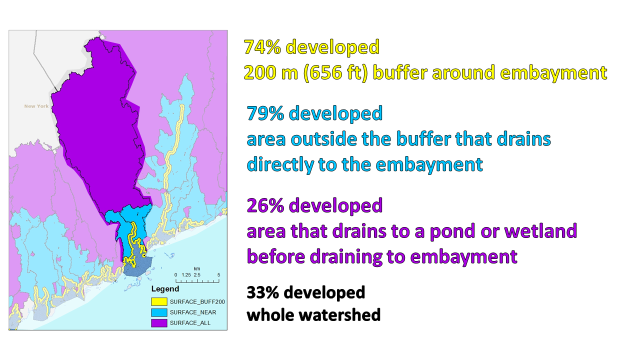On the afternoon of January 14, the Connecticut Department of Energy and Environmental Protection (CT DEEP) held an informational hearing requested by Save the Sound on the renewal of their National Pollutant Discharge Elimination System (NPDES) permit for Norwalk. In attendance were concerned local residents, Save the Sound legal staff, the Long Island Soundkeeper, and staff engineers from the Norwalk Wastewater Pollution Control Authority, an entity that manages the sewage treatment plant that primarily services Norwalk residents.

Save the Sound is concerned about Inner Norwalk Harbor’s water quality and filed comments based on both excessive Sanitary Sewer Overflows (SSOs) and unpermitted Combined Sewer Overflow (CSO) outfalls which carry a combination of stormwater and raw sewage to bypass pipes that discharge directly into the inner harbor. According to the Unified Water Study water monitoring results, this body of water received an “F” grade based on clarity and dissolved oxygen parameters. These findings from Save the Sound are corroborated by the list of “Impaired Waters of the State” which, according to the 2020 Integrated Water Quality Report issued by CT DEEP, Inner Norwalk Harbor is listed as not supporting aquatic life, recreational, or shell fishing uses. The causes for the aquatic life impairment have been determined to be dissolved oxygen, oxygen saturation, and seaweeds. The cause of the recreational use impairment has been determined to be enterococcus, a type of fecal bacteria often associated with untreated sewage discharges.
The Norwalk WPCA presented an excellent overview of their operations that included upgrades and future contracts to improve the situation. Of note is their upcoming contract to perform a system-wide hydraulic evaluation using 40 flow meters to identify problems in their collection system including inflow and infiltration of stormwater that can overload the collection system, causing sewage to burst from weak points. If this analysis had been done earlier they would have located a large, hidden CSO outfall under the bridge at Wall Street that had been undetected for decades and may have been contributing significant sewage pollution to the inner harbor. That CSO has since been partially walled off and is being monitored to see if it can be closed off entirely with all the effluent being transported to the wastewater treatment plant.
The Norwalk WPCA relies on the use of both an unpermitted and permitted CSO outfall to accommodate excess flows that would otherwise overwhelm the collection system and the treatment plant. But this is not the appropriate solution to a system that is overwhelmed by excess flow during storm events, because it results in the discharge of raw sewage into waterways. Save the Sound has advocated for a detailed review on the use of these outfalls and a plan for their elimination, which can be accomplished through repairs and rehabilitation throughout the collection system.
The overflows and effluent treatment numbers were better in 2020. This is partially due to the advanced monitoring system that now operates the wastewater plant and ongoing upgrades, as well as years of sewage leak track down work performed by Harbor Watch. However, 2020 was an exceptionally dry year which puts much less strain on combined rainwater/sewage systems and allows for better nitrogen reduction capabilities before the effluent is discharged into the harbor. Drought years produce better numbers.
The Norwalk WPCA also presented on the reductions in influent that reaches the plant, a metric that can be used to indicate the effects of repairs to the collection system that have resulted in less stormwater infiltrating and overburdening the system. However, these reductions have been marginal thus far, and should not be considered on an average annual basis as they were presented. Sewage overflows are caused by acute major storm events, therefore individual peak flows that exceed capacity are a better metric for measuring success.

One major impairment in the harbor is the amount of impervious cover and the loss of the coastal wetlands that once lined the shores. Much of the shoreline is now cement, so efforts are underway to address these issues which run large amounts of stormwater into the system that, with reduced salt marsh, has little ability to filter pollutants.
Save the Sound is committed to tracking these efforts and looking for long-term solutions.
